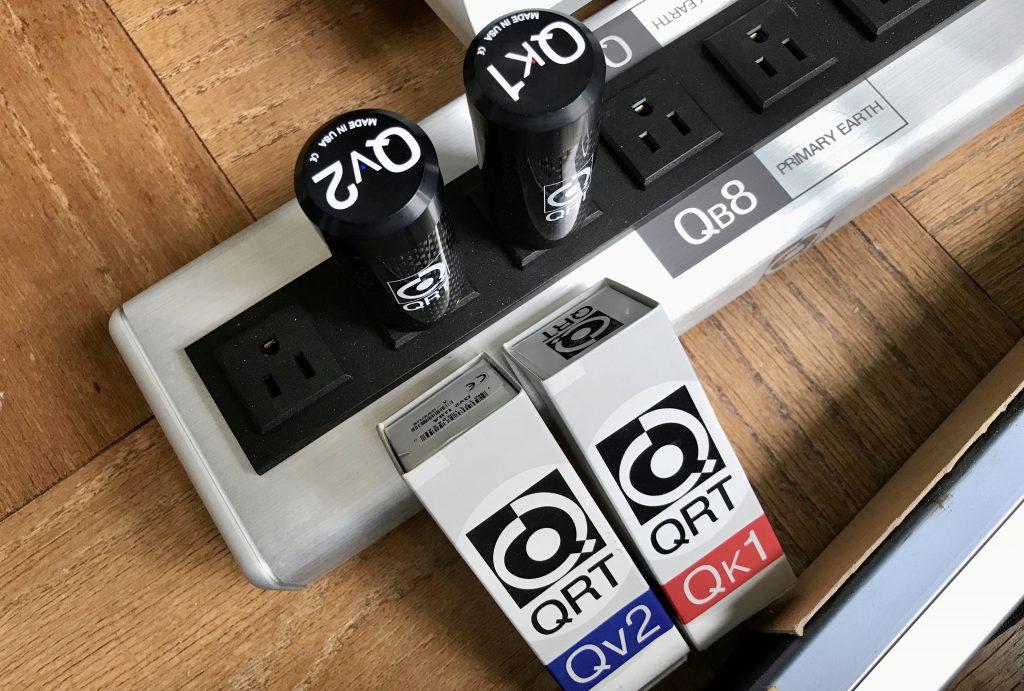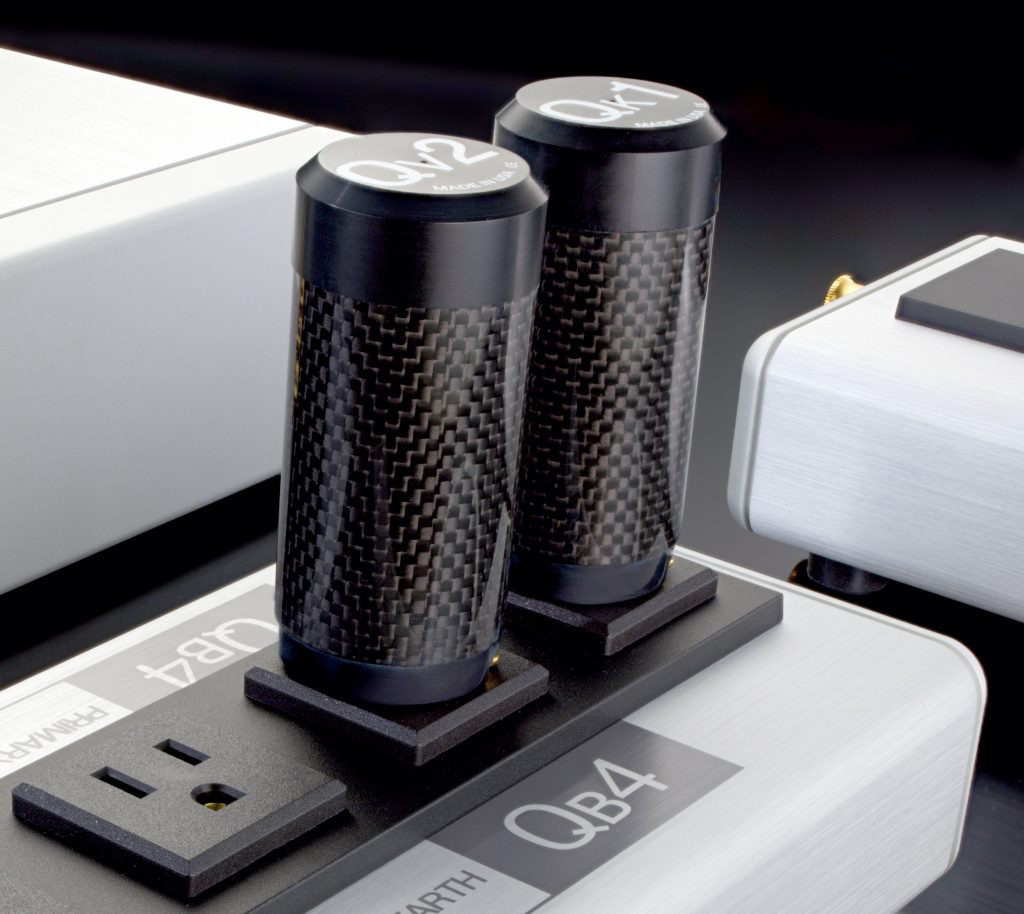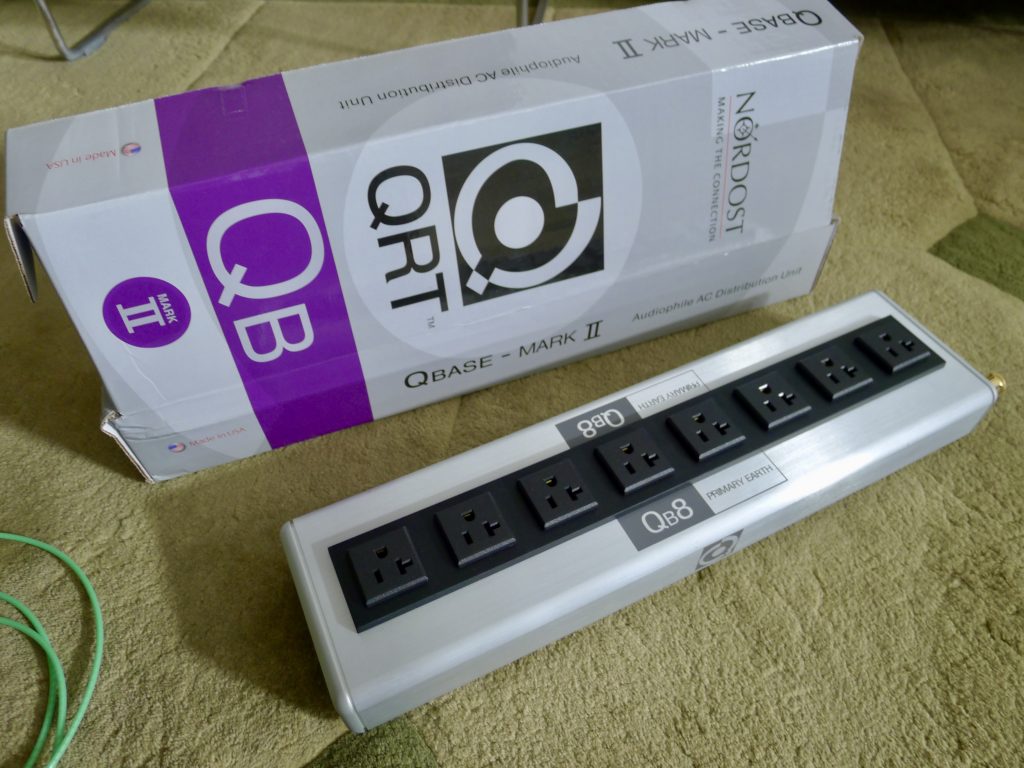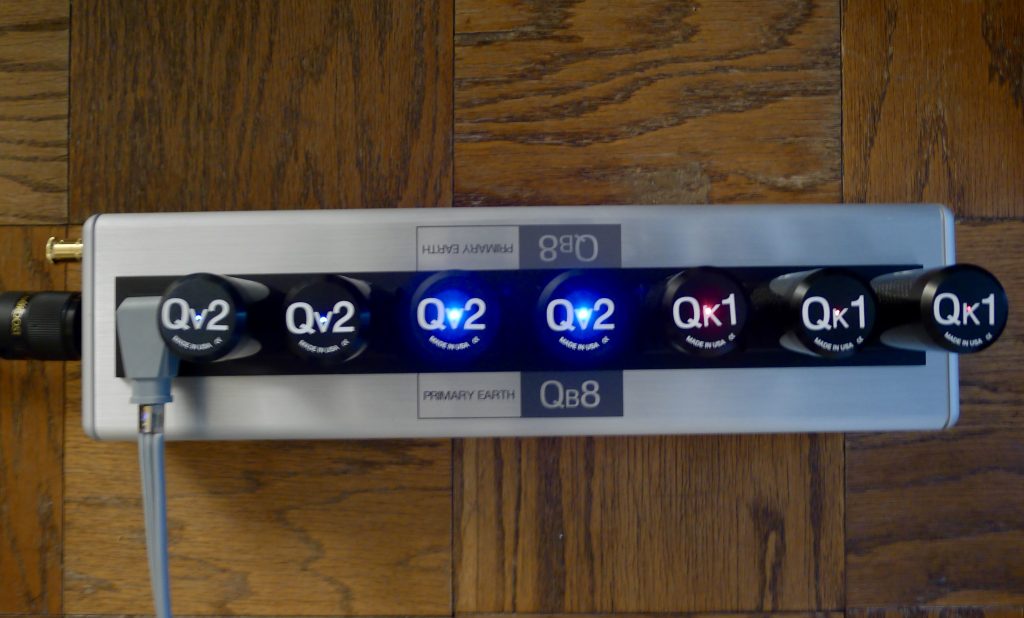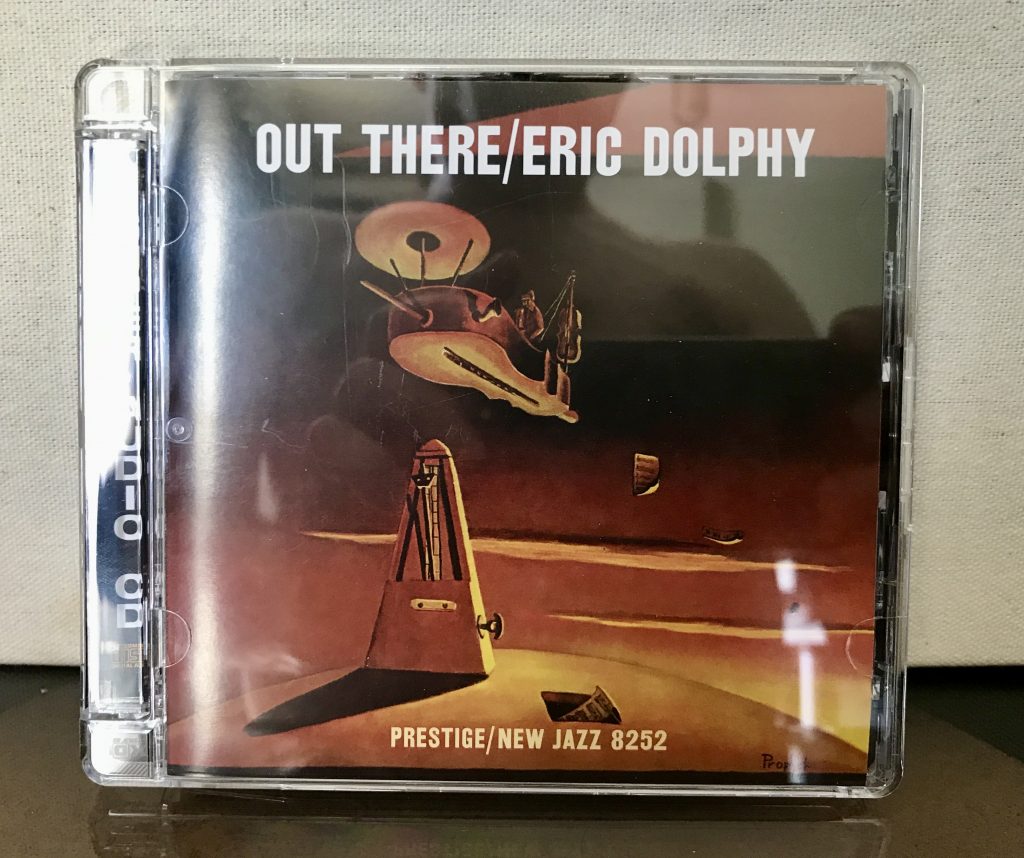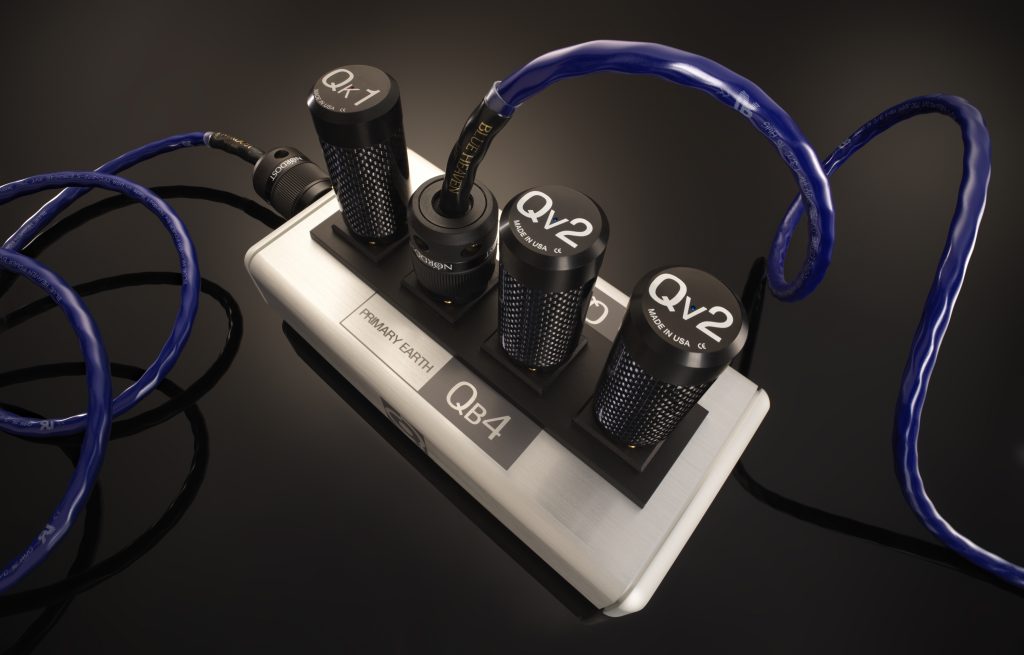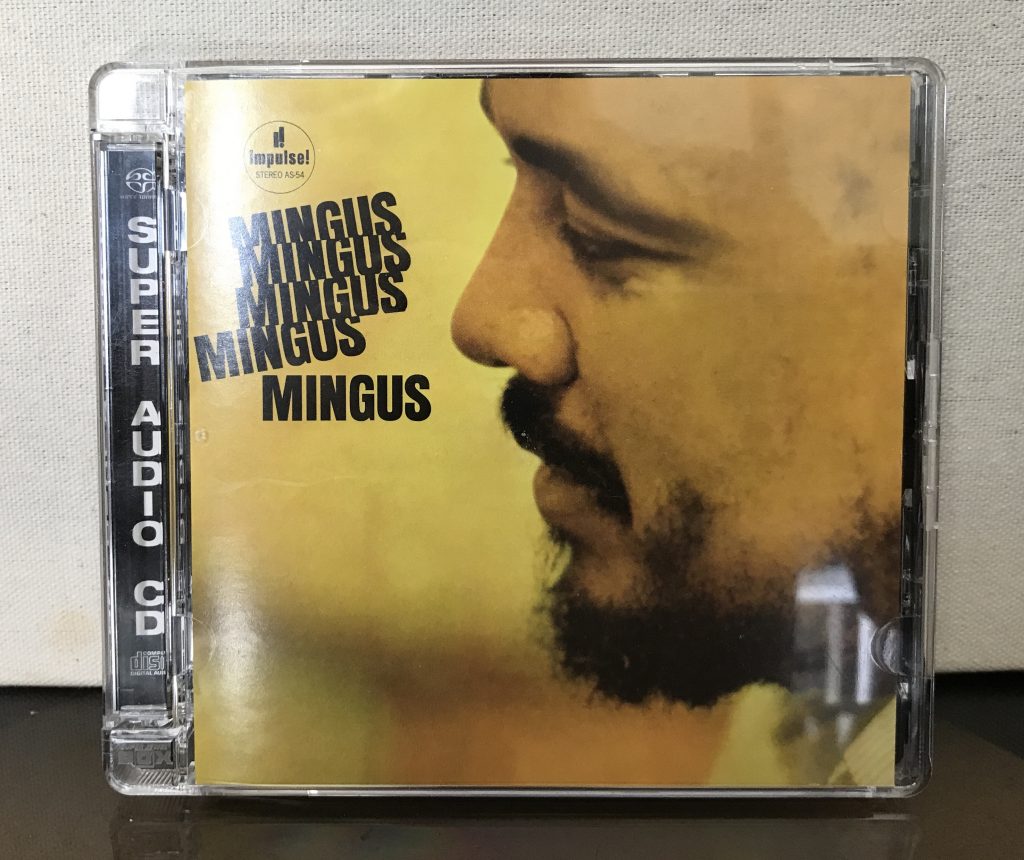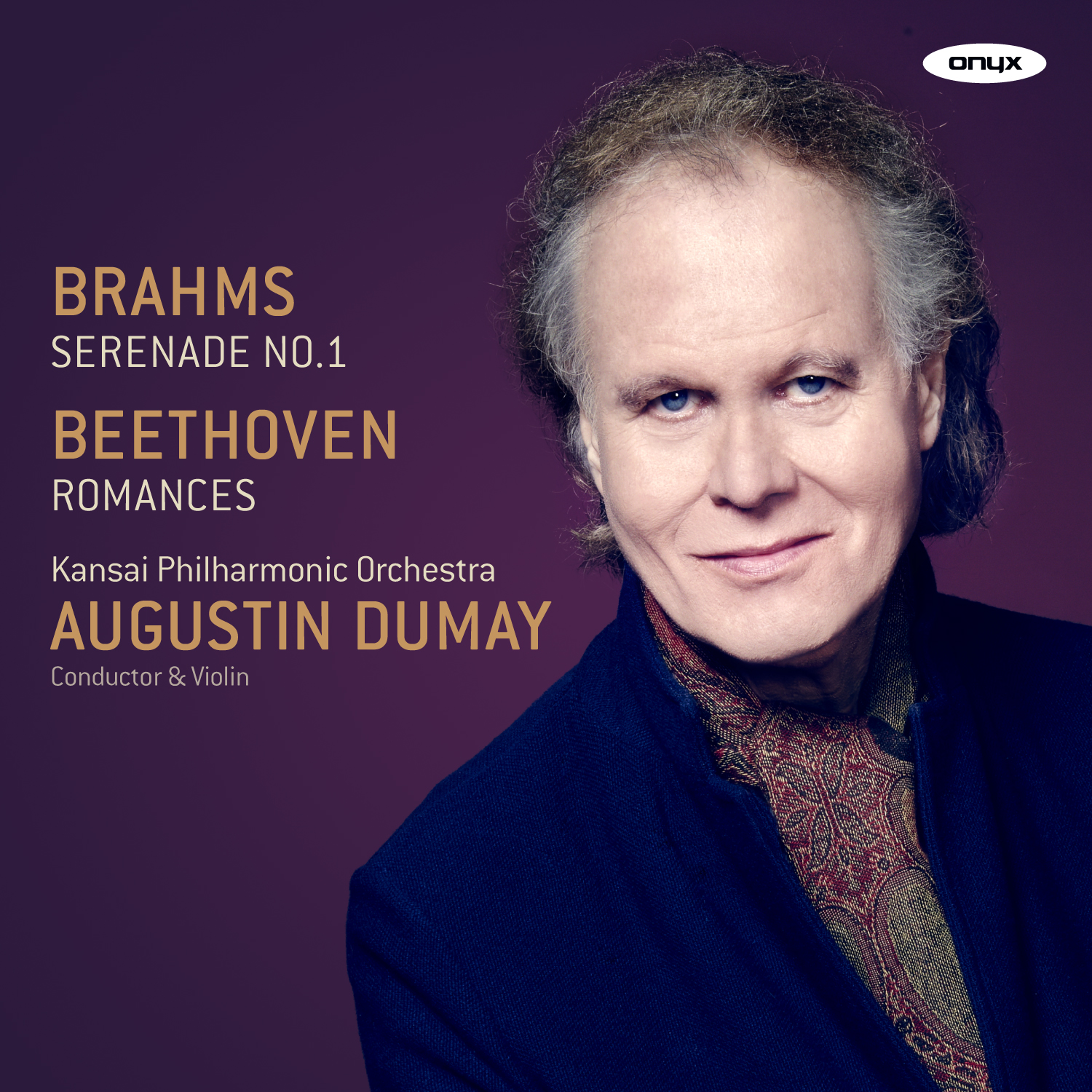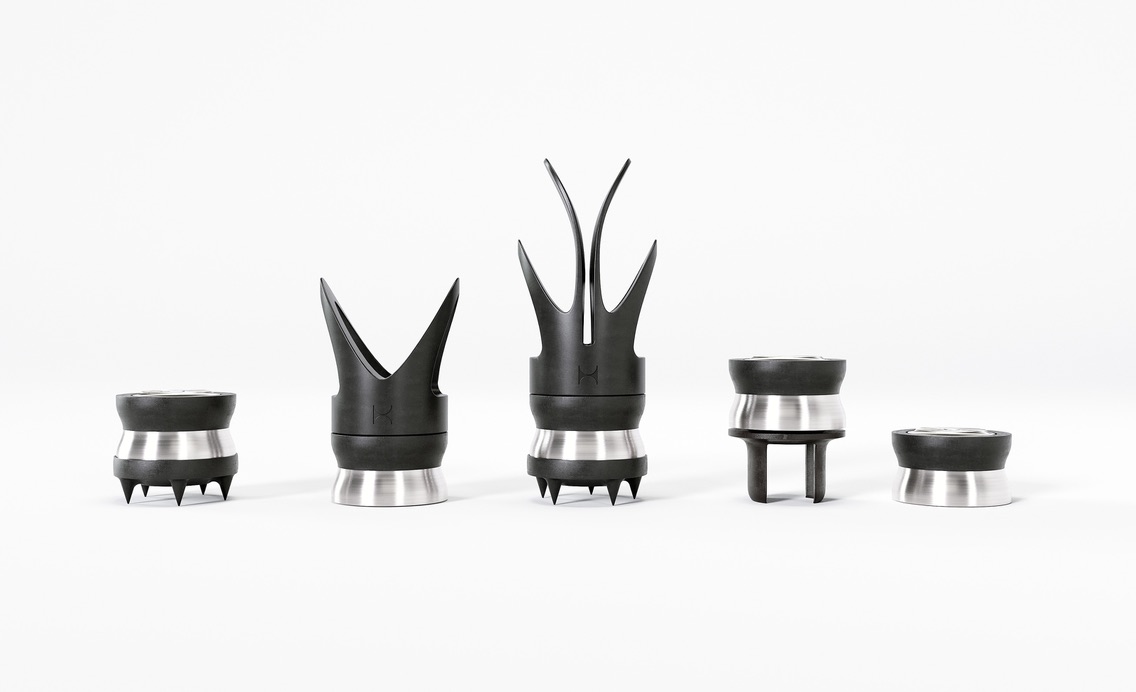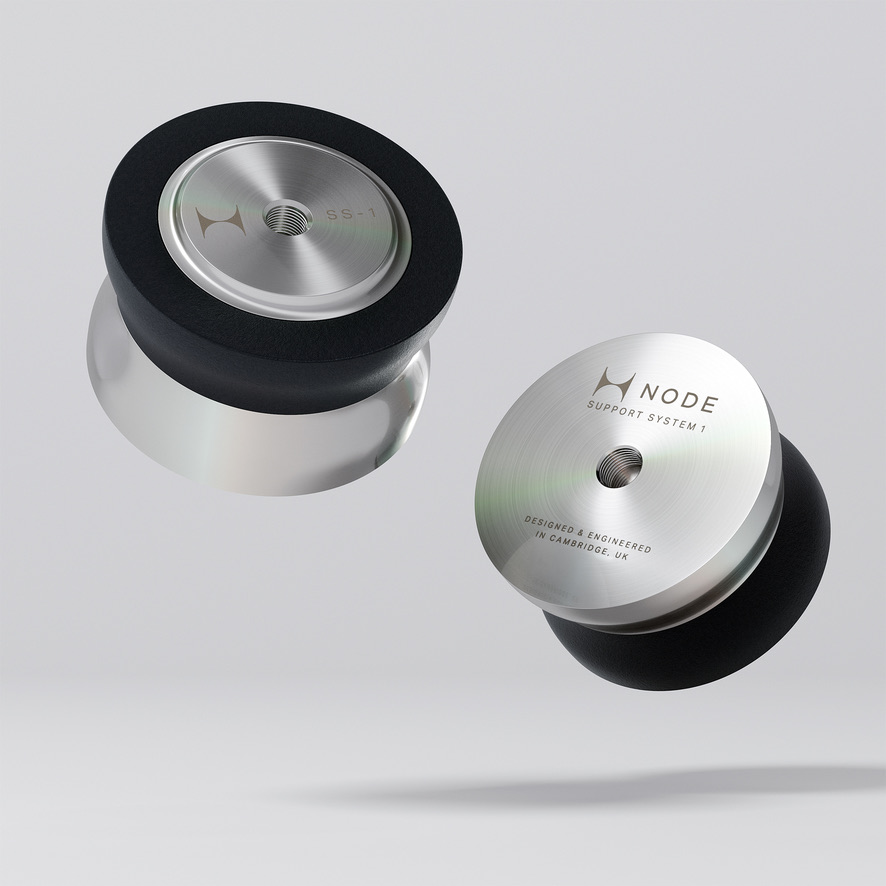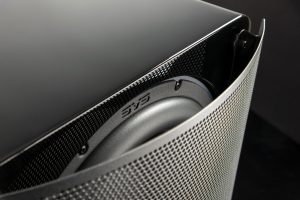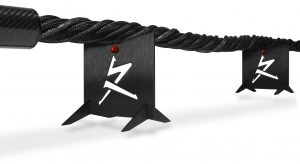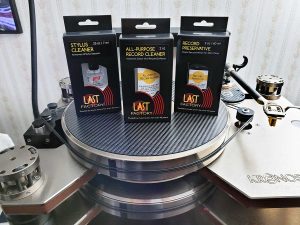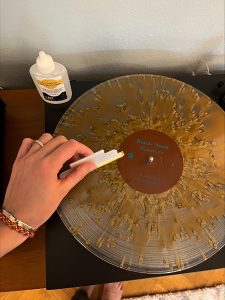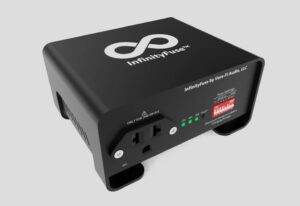By far, the cheapest items in Nordost's line of QRT Audio Enhancers are the QVIBE2 AC Line Harmonizer (MSRP $349.99) and QKOIL1 AC Enhancer (MSRP $249.99). While the cost may be modest, the performance gains claimed in the product descriptions are not. If they even came close, this pair of tweaks would be a godsend to hordes of audiophiles.
AC is not a Simple Matter
AC coming from the wall is not a simple matter. We all know about the common forms of environmental contamination that latch onto the ground pathways of home AC, compromising purity and, in turn, degrading our gear's performance. That's why we have expensive power conditioners (or distributors), to return AC to a pristine state. (Question: If that's the goal, why do all these devices impart different sonic footprints?)
QVIBE Description
Although I never gave the subject much thought beyond that, Nordost has. They've developed a pair of devices to repair and tweak the AC from the wall. From the website:
The function of the QVIBE, or QV2, is two-fold. Its primary purpose is to transmit additional frequencies onto the AC line that impact the mid and upper bass ranges of sound. The secondary objective is to remove irregularities in the sine wave that could negatively impact sonic performance. The active circuit board used in the QV2 is programmed to emit a frequency pulse 60 times per second, mirroring the peaks and troughs of a sine wave. These precisely timed bursts help to maintain the shape of the wave, where there could be tendencies for it to collapse, eliminating any harsh quality to the sound.
QKOIL Description
The QKOIL is a load resonating coil (LRC)… which generates a passive electronic field… making the AC current that much closer to the desired "distortionless condition." The sensory results: an improvement in the overtones and pacing of the music, as well as a lower noise floor and a greater sharpness in the upper frequencies, depth and focus of visual qualities.
Frankly, these (edited) descriptions read like science fiction or a heavy dose of ad-speak. I mean, it's one thing to quest after purity in the line, but who ever heard of targeted manipulation of the AC sine wave to address specific sonic characteristics? There are SET amps which add 2nd order harmonic distortion, or room treatments to modify in-room frequency response, but I've never anything addressing the AC wave in this manner. There are very different mechanisms at work here, to be sure.
But… but… What if it works? I had to check them out.
Installation
Plug-n-Play? You would think installation would be straightforward—simply plug them into any available AC outlet—but it's never that easy for me. The first week with the plugins was frustrating, as I chased them around the room trying one placement after another. By mid-week, I realized I had a moving target: wherever I left them, the next day they would sound different.
Burn-In
Fortunately, I had access to a Nordost rep, who confirmed there is a burn-in period. The QK1 employs a Load Resonating Coil, basically a coiled Nordost wire that is tuned to resonate in the treble band. Like any other audio wire, it needs to be powered on for a couple of days to burn-in. The QV2 manipulates the bass region and an LRC could have been used here, but it is not practical. To generate a bass resonance, the coiled wire would need to be as long as your room. Therefore, a PC board is employed, which has to burn-in for 3 to 5 days. Note: if you move the plugins around trying different placements, give them a minute to settle before evaluation.
Which AC Line? Which AC Power Distributor?
So, where to put them? I have a pair of dedicated lines: one for the front-end, the other for my amps; and a number of different power distributors. Intuition suggested the Kubala•Sosna XPander power distributor on the front-end circuit, which had a lot of unused outlets. I loaded up some QV2s and QK1s and quickly found out the power distributor (and the power cord) interact with the plugins and have a big impact. This combo was not good.
Thankfully Nordost had the foresight to include a QBASE8 power distributor and one of their Frey power cords for the project and, unsurprisingly, these were a natural fit with the plugins. They made it very easy to do A/B comparisons: load up the QBASE8 with as many QV2s and QK1s as needed and simply plug or unplug the Frey power cord. Eventually I settled on using an open wall outlet on the amp circuit for optimum results.
Of course, you could do without the power distributor and plug them directly into the wall, provided you have enough outlets available. As for the number of plugins to deploy, it's trial and error. The recommendation is to start with a QV2; add a second; then add a QK1; and so forth. Evaluate at each step.
La Musica Jazz
I had just bought a pair of superb Analogue Productions SACDs, reissues from jazz's golden era. The lineup on Out There had a quartet led by Eric Dolphy featuring Ron Carter on cello as the second solo instrument (CPRJ 8252 SA). It was recorded by Rudy Van Gelder in 1960 for Prestige/New Jazz.
If you are not familiar with Dolphy, Out There can be off-putting, just a lot of noise. What is this guy doing? Is he insane? I am aware of his high standing amongst jazz aficionados and quasi familiar with his discography. Still, it does seem ugly at first, and the sonics were not helping. Was the recording venue a room or studio? I could not tell. The instruments seemed wishy-washy, lacking substance, not really present. Yet, I assure you, there is great music here.
Tweaks Onboard
I plugged in the QBASE and loaded up three QV2s and one QK1. Instantly, the instruments stood up and came to attention with a rather dramatic change in energy, tone, and soundstaging. There's a persuasive illusion in my ear-brain of a quartet of large images arrayed across the front of my living room. These guys stand in different locations and all sound different in terms of tone and timbre, so there is no mistaking who's doing the talking. Their elocution is much improved; when they speak, it is easily understood. They are strongly present, not recessive.
The plugins have obviously done their thing. You sit back, marveling at the pronounced, tight low-end, and the smooth, fleshy treble. There is absolutely no need to tweak anything, like a shrill treble or loose bass, because the frequency response is nearly perfect. As for the recording venue, everything is more explicit. I still don't know where it is, but it doesn't bother me as much. (Note: most of RVG's recordings for Prestige/New Jazz of this vintage were made in his New Jersey living room.)
The second disc, Mingus, Mingus, Mingus, Mingus, Mingus, was recorded in 1963 by Bob Simpson for Impulse (CIPJ 54 SA), and is another fine specimen from jazz's golden era. It has himself on double bass leading an all-star band, and guess who appears on some tracks—Eric Dolphy. The reproduction of the recording venue couldn't be more different from Out There. The ambient cues are so compelling, I'm convinced that I'm in a large space. This can't be unfolding in my living room; I'm in an auditorium somewhere. The audio system is doing that thing I call the magic carpet ride, elevating me out of my room and transporting me… somewhere. The stage is huge, pushing out in all directions. All dimensions have inflated by a good 15%.
Depth is well-defined, layered, and with abundant atmosphere. The instruments are accounted for, their images larger, yet discrete with no overlap, and penetrating into the far corners. The quality of the images is excellent: stable and unwavering, not stiff or unnatural, and not etched.
There's no doubt the QV2's give you a generous mid-and-upper-bass assist, and the QK1's round and flesh out the treble range. From the hefty, well-defined low-end into the clear mids and the soft-edged, non-abrasive highs, frequency response and tone are beautifully rendered. The palpable illusion of instruments present is happening in the way the best audio systems do it. These jazz SACDs sound spectacular and audiophiles will love this.
Tweaks Offline: What it Doesn't Do
However, when I switch genre to classical, I want to hear something other than excellent Hi-fi sound. The enhanced soundstage, the discrete 3-D images, and that impressively big, tight low-end—all take a backseat. (Whether they exist at all or are artifacts is still a lively debate.) The illusion I crave is the sound of unamplified acoustic instruments in a good hall. Grey beards will recognize this as the time-honored grail as laid down by the founders of The Absolute Sound magazine. I spent a fortune on my system and it is maxed out to the nth degree with a seemingly modest goal in mind: to accurately reproduce the sound of a violin (or cello, or piano). That is my goal and I'm getting closer.
I am seduced by the wonderfully varied tonal shadings, colorful timbres, and the limber, expressive musical line of Augustin Dumay's solo violin on Beethoven Romance No.1 for violin and orchestra. Somehow, with the plugins, that illusion backed off; whatever it is the plugins do overlaid those delicate details.
Quite likely this is not a show-stopper for you, because what I quest is not to everyone's taste. It used to be a widely shared goal, but times have changed and I don't see much discussion of the grail nowadays. In my travels I've encountered very few systems voiced to reproduce the concert hall experience.
Conclusion
When I read about the QV2 and QK1 from Nordost, they seemed too good to be true. Here we had a pair of cheap tweaks that promised to address performance shortfalls I've been chasing for a long time. Indeed, most audiophiles are hunting for these same Rx.
Among the advertised claims, the QV2 will augment the quality of mid-and-upper bass. Similarly, the QK1 assists the treble range, benefiting overtones and smoothing stridency. Both will help soundstaging dimensionality and specificity.
That's quite a lot of promises and, remarkably, with two QV2s and one QK1, that's what I heard. The plugins did the audiophile dog and pony show to an amazing degree, producing the kind of sound audiophiles dream about.
This was great for the jazz CDs I played, but when I switched to the classical genre, my quest is for something that recalls the concert hall experience. With the plugins, that illusion suffered and credibility backed off. So, ultimately, these tweaks are no Rx for me, but they may be the right prescription for you.
QVIBE2 AC Line Harmonizer
Retail: $349.99
QKOIL1 AC Enhancer
Retail: $249.99
Nordost




